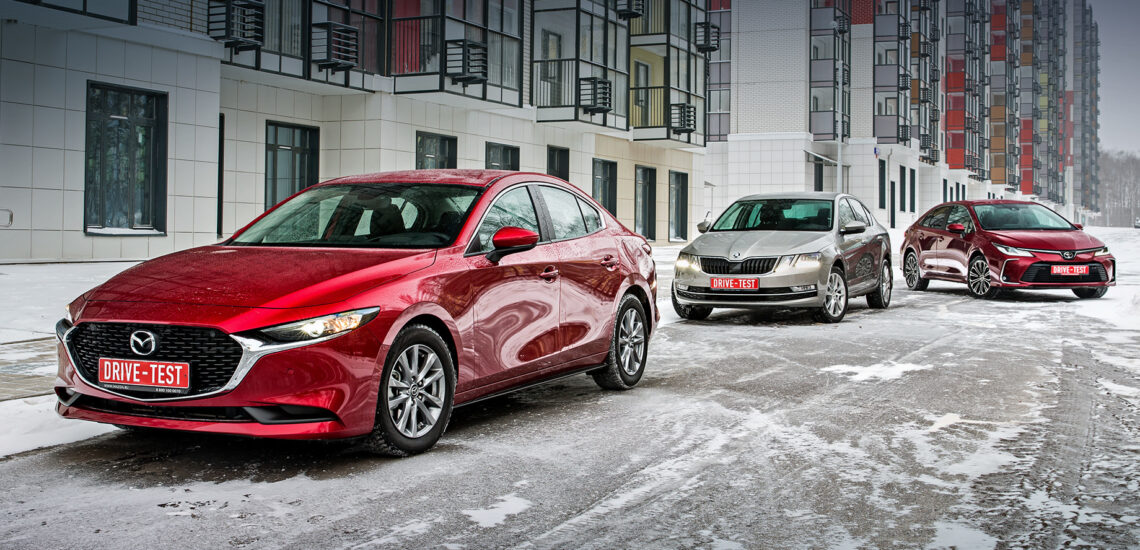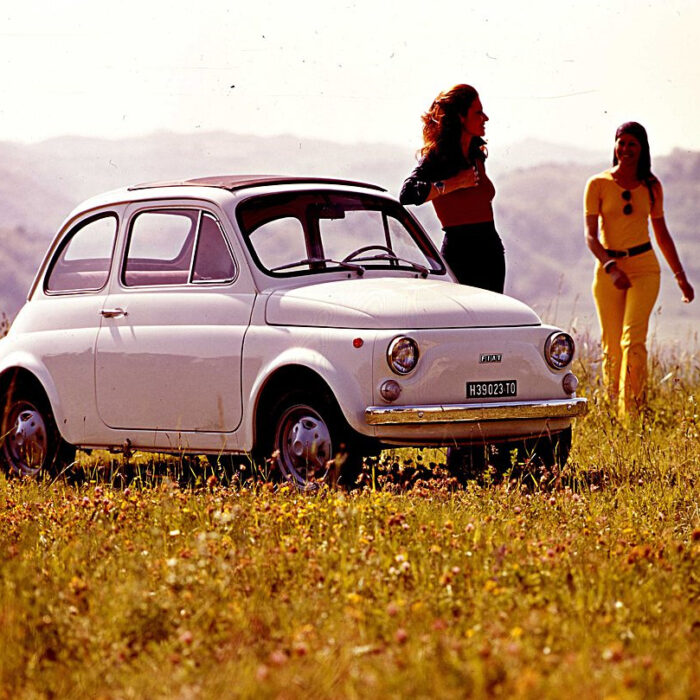Waving from the leaving Octavia to the Mazda 3 and Toyota Corolla sedans
C-class passenger cars have become outcasts. Despite the success of the Octavia, the segment is shrinking significantly faster than the market as a whole. While starting this test, I ask myself: is it the last time? It’s good that news like the Mazda 3 sedan appear in the golf class. Although, according to statistics, it is already clear that it was certified for selling several hundred cars a year. In addition to the absolute bestseller, we also took the winner of the previous sedan test, the Toyota Corolla, to the company for the 3.
Once the most popular Mazda has become niche in terms of model. The fact that the representative office didn’t abandon it causes respect. Hence we understand why the only configuration with a couple of option packages is available, and why there is only 120 hp, removed from the non-alternative aspirated 1.5 engine, under the hood. The power of the Corolla is similar. There are no faster options, but there is a choice of equipment.
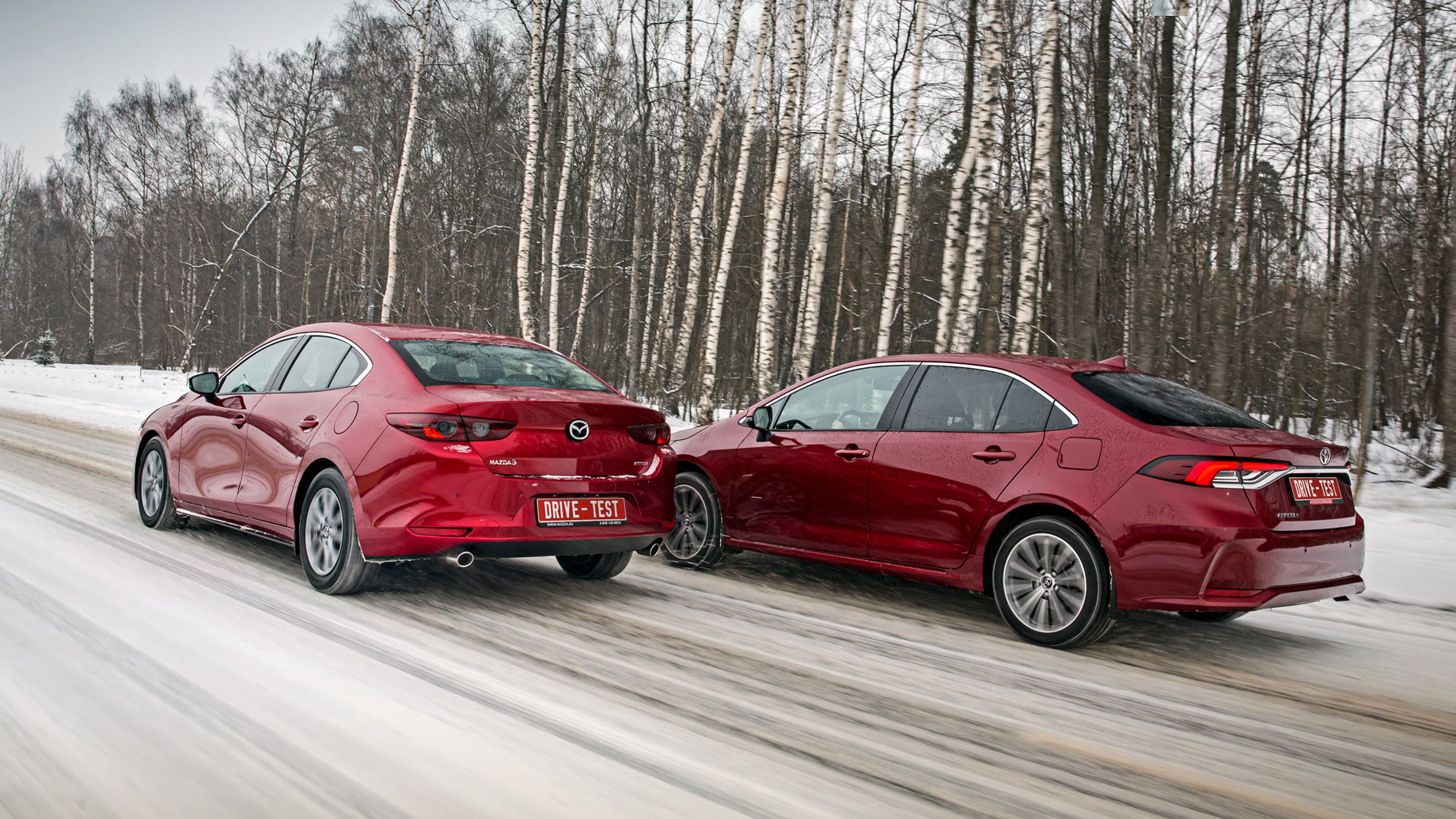
The popularity of the Skoda is justified by the choice of three engines and gearboxes, almost any option can be ordered separately.. A liftback with more than a 500-liter trunk is more practical than a sedan by definition. And most importantly, largely thanks to localized production, it is easy to buy the Octavia with a torquey 150-horsepower 1.4 TSI turbo engine for the same amount that they ask for top Japanese D-segment cars. We did so.
The Mazda certainly has the most predatory look. The sedan, in my opinion, looks lighter and more harmonious than the hatchback. The appearance is only spoiled by visually cheap optics with conventional DRL and marker light bulbs. LED running lights are provided only for top-end hatchbacks. A fuel filler flap with a “sunken” surface relative to the splasher stands out against the background of smooth body gaps. But the quality of the interior is almost flawless.
The surfaces are sculpted from the heart. I want to come back to this low-fit interior again and again. The Mazda is both cozy and modern. A media system display is elegantly integrated into the panel. A low screen is not very convenient when working with the navigation system (optional), but other functions aren’t affected. It is the Mazda’s instruments with a speedometer on a large display that can be called the reference in the test. The information is also displayed on the windshield.
The Corolla can’t be called boring, but the ornate design is less sincere. The Mazda 3 proves that a laconically rendered car can be perceived as one hundred percent Japanese. The Toyota’s interior is arranged around a central display, but only 2020 Corollas with Android Auto and Apple CarPlay interfaces can show something interesting on it.
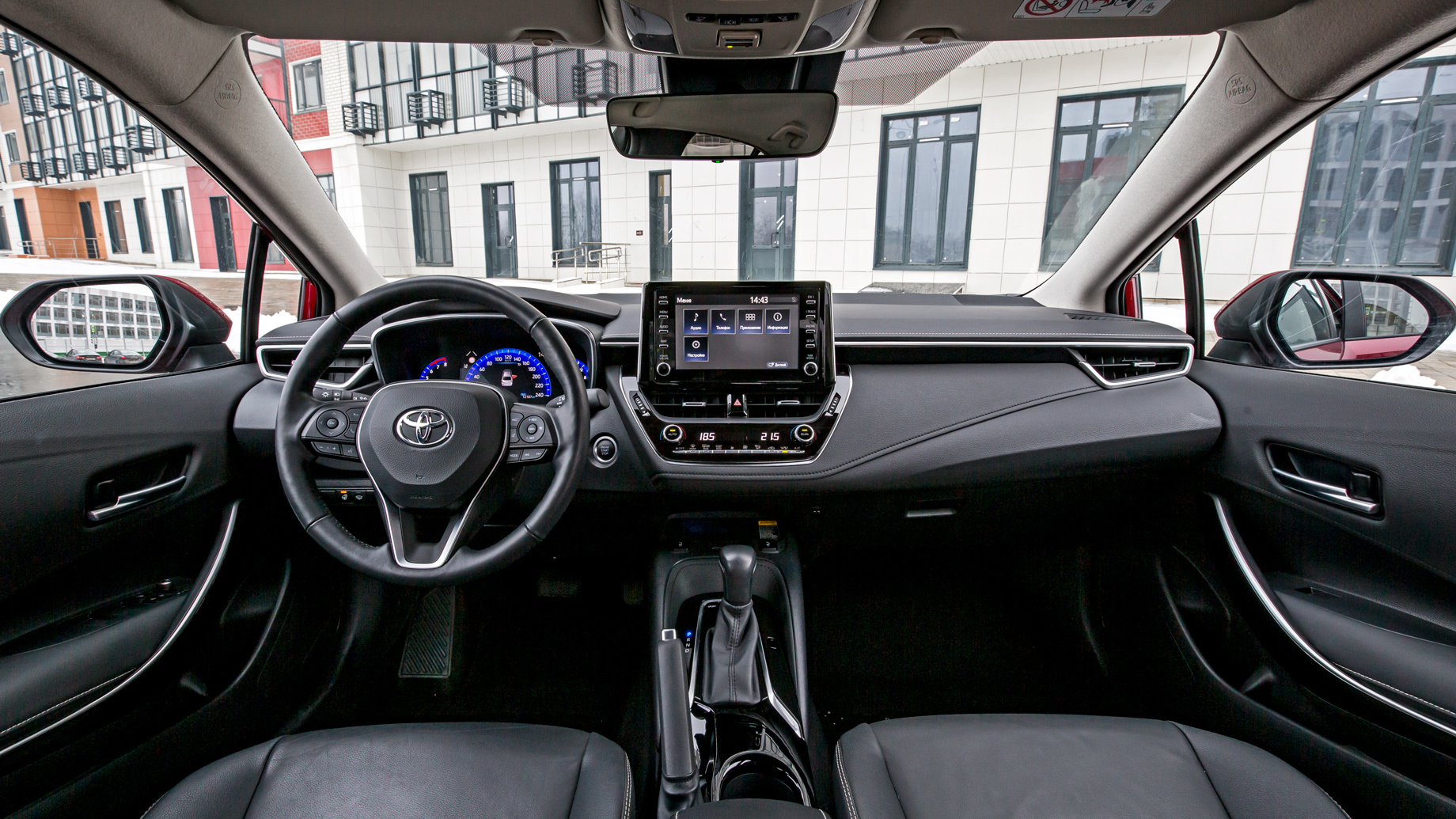
Our car is last year’s: with dull graphics and modest functionality of the media system. The instrument panel is needlessly smeared with blue or red, depending on the mode. But, unlike the RAV4 crossover, all buttons are illuminated in the cabin. The Mazda and the Skoda also don’t spare light bulbs, as well as power windows with auto mode for all doors.
This is probably the last test of the outgoing generation’s Octavia, and, of course, its age is felt. Especially if you are partial to the type of finishing panels in the cabin. But the Skoda for such money is not so simple. Glove boxes with pockets are trimmed with soft material, the list of pleasant little things like hooks for clothes and USB sockets is much wider. The electronic instrument panel is not perfect, but it is very technological.
While the trunk of the Octavia is out of competition, it has not much more comfort in the back seats than, say, in the Corolla. Except that the feet are freer and the ceiling is farther from the head. But the margin of space in the knees is identical. The “Third” is frankly cramped in the back. Once behind a tall driver, a passenger of my height (6’3) is deprived of the opportunity to straighten his spine normally and presses his knees into the back.
The fit at the wheel of the Mazda is low and sporty, and the fabric seat holds you perfectly in turns. The only thing missing is the adjustment of the lumbar support — only if someone doesn’t rest their knees from behind.. The feeling is also good behind the wheel of the Skoda, but some complain about the large height difference between the brake pedal and the accelerator, especially noticeable in winter boots with wide soles. In addition, the Octavia has tougher armrests.
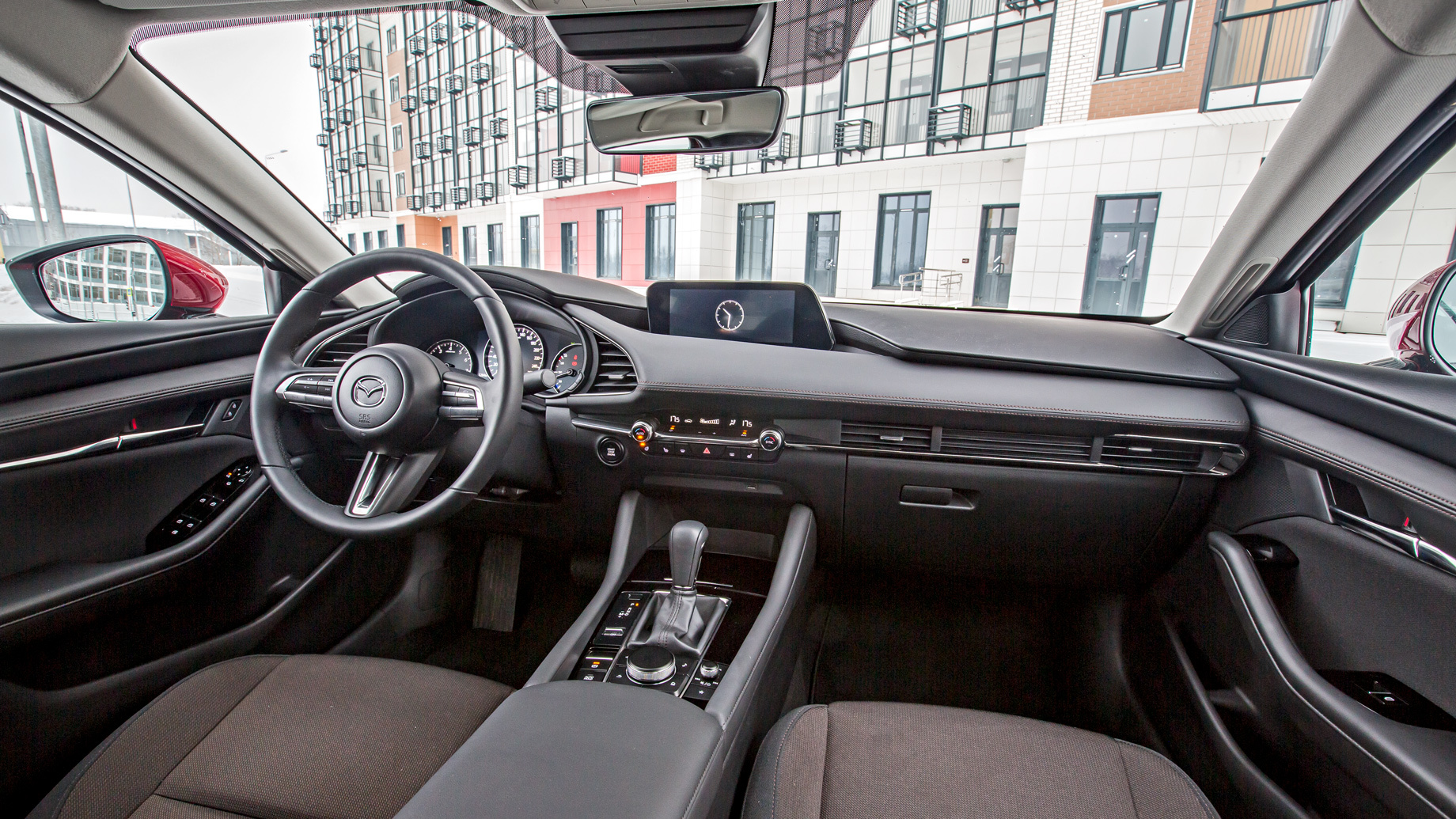
You sit higher in a soft Toyota’s seat, and visibility in the front sector is slightly better because of the thin pillars moved forward. But you can call it a real advantage only with clean windows. In the slush, the cleaning sector seems narrow due to the remoteness of the windshield. The picture in the cabin mirror is spoiled by the rear head restraints. In the Mazda, the rear view suffers because of the low glass, and in the Skoda, visibility is just like visibility.
The “Third” shows sportiness on the move — albeit only when driving slowly, for example, in a crowded city. The automatic transmission is configured in a sports way, without any “woolliness”. It seems that there is no torque converter at all, and the gearbox simply shifts fixed gears, sometimes even with corresponding jerks. The accuracy of traction control is excellent for 120 hp. The Mazda vegetates only during high-speed overtaking. The brake is short-stroke but at the same time pleasant and understandable. I am pleased with the accuracy of taxiing with small turns of the steering wheel and adequate feedback.
But fast turns reveal boring “circular” settings with dominating drifting. But the rolls are small. A rutted highway requires taxiing, while the severity of reactions is moderate. While the steering wheel makes 2.7 turns between end positions in the Skoda, there are three turns in the Mazda. It is gratifying that the suspension is not excessively rigid, as in the Octavia, but, let’s say, shows noble firmness. Tires with a diameter of 16 inches swallow small irregularities well, and overcoming large ones is more annoying with loud voice acting than shaking as such. Although it is felt to a small extent even on the steering wheel.
The Skoda with its worst smoothness (all irregularities and waves are transmitted to the cabin, and those that are larger press on the ears with low-frequency acoustic resonance) pleases with the lightest and most transparent steering wheel. However, the chassis is not distinguished by fiery handling. In its limit, the Octavia is boring and not enough. Exactly in that order. Only its dynamic superiority is unconditional: turbo power is significantly higher, the “robot” is almost as efficient as the Mazda box. You even can scorch in the stream.
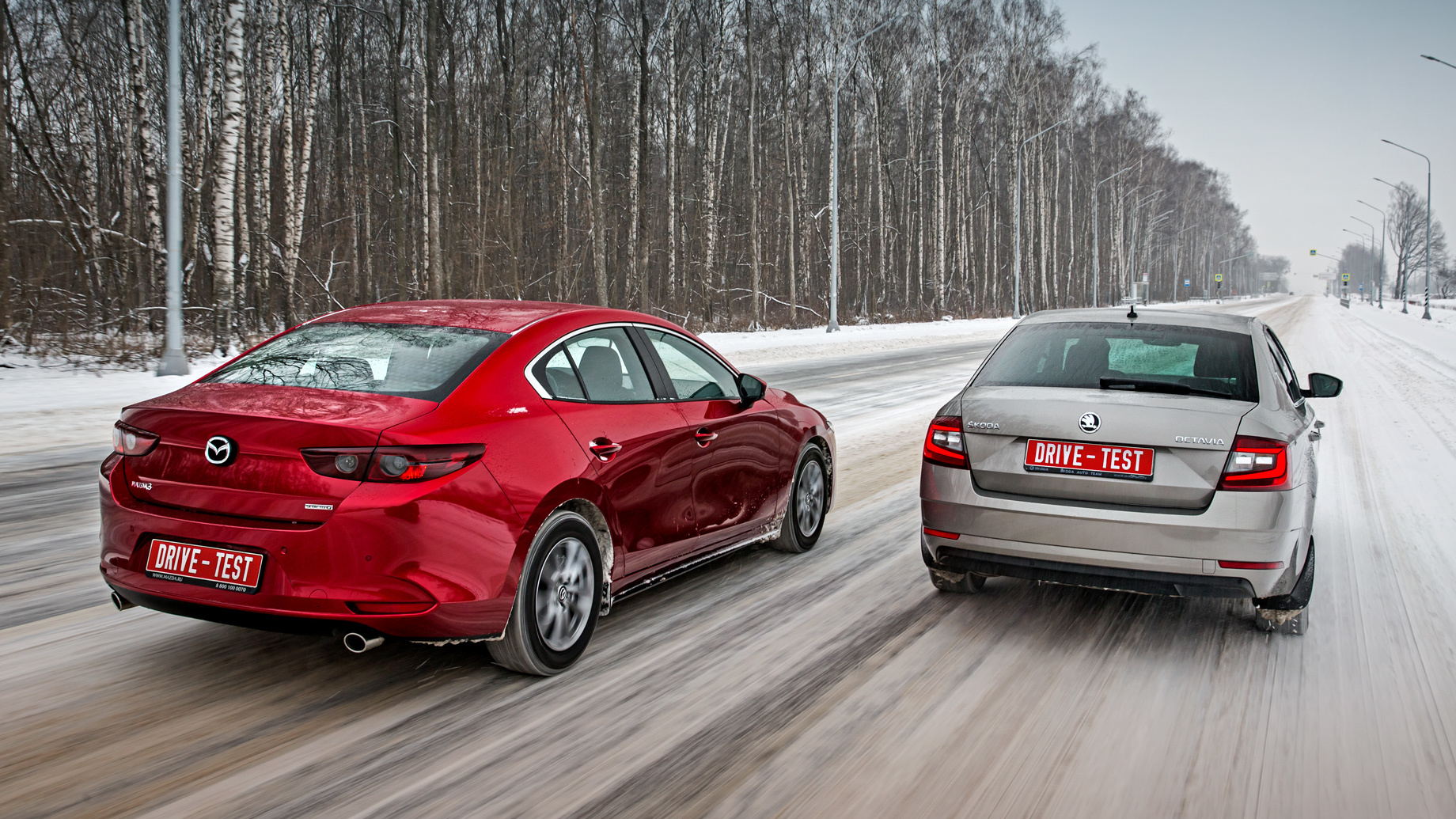
The Corolla has a variator between the motor and the wheels. With measured movement, it doesn’t try to look like an automatic gearbox, which is why gas responses are a little lazy. If you drive faster, “stepiness” manifests itself. But it is unclear where the declared one and a half seconds advantage over the Mazda in acceleration to 60 mph is here. Subjectively, the dynamics doesn’t differ, and the coating doesn’t allow measurements. You use brakes without mistakes, although there is the largest pedal stroke, even during emergency braking.
All types of irregularities are also overcome more smoothly. The Toyota’s suspension is not forgiving, but only large pits cause discomfort. Compared to both competitors, the Corolla steers gently, with microscopic delays, although the steering seems to be the sharpest. The funny thing is that it is the calm-looking Toyota that gives the greatest pleasure from fast slippery turns. Almost immediately after entering, the car confidently rests on both outer wheels, allowing you to balance between drifting and skidding. Perhaps it’s the steering of the rear multi-link. The other two cars have semi-independent beams.
But it seems that the non-studded Bridgestone VRX tires, which are very prone to skidding, are also affected. They definitely had a negative impact on the noise. The Corolla didn’t seem quiet to us in the summer test either. And now a strong rumble from the wheels appears literally from 6-12 mph, becoming barely bearable in 37-50 mph. Isolation from street sounds is also lame in the Toyota.
The Mazda is a little more careful about our hearing with almost the same distribution of signals between noise sources. A noticeable hum from the road dominates, the motor is smoothed out at intense acceleration, but clearly audible. Against this background, the Skoda has to be recognized as the quietest: there are fewer evenly penetrating sounds from the wind, tires and external irritants into the cabin. And the supercharged engine almost doesn’t make us pay attention to it..
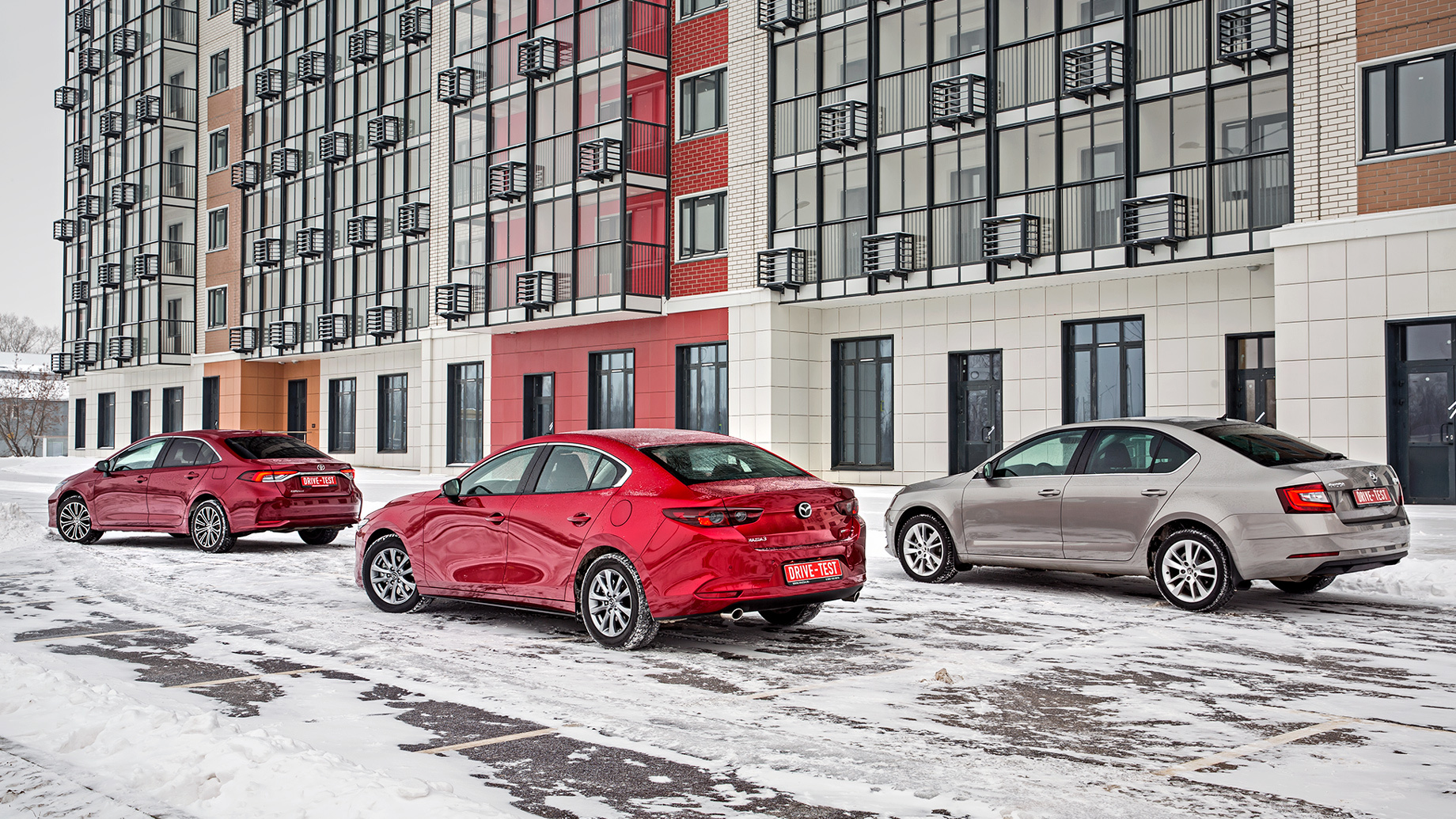
A sober analysis, coupled with the study of price lists, shows that, for the same money, the Skoda turns out to be more practical than rivals, quieter and is ready to offer equipment exactly according to your taste. City people may not notice the poor ride smoothness. In addition, 17-inch wheels, like on the test car, are rather an exception for the Octavia. Another argument in favor of the old Skoda is the new Skoda, with its touch interfaces instead of buttons convenient in winter.
The Corolla looks like the quietest option in this company. The interior is surprisingly spacious, there is a smooth ride.. And visually, the Toyota is clearly more modern than the Skoda. But the manufacturer has to do something about the noise from the road! Personally, my passion in this trio is caused only by the irrational Mazda 3. It is in the “Third” that it is most pleasant to spend hours in the city twitching, where turnability is unimportant, but you can get high from the accelerator and brakes settings.
This is a translation. You can read the original here: https://www.drive.ru/test-drive/mazda/skoda/toyota/5e577415ec05c41e40000064.html

